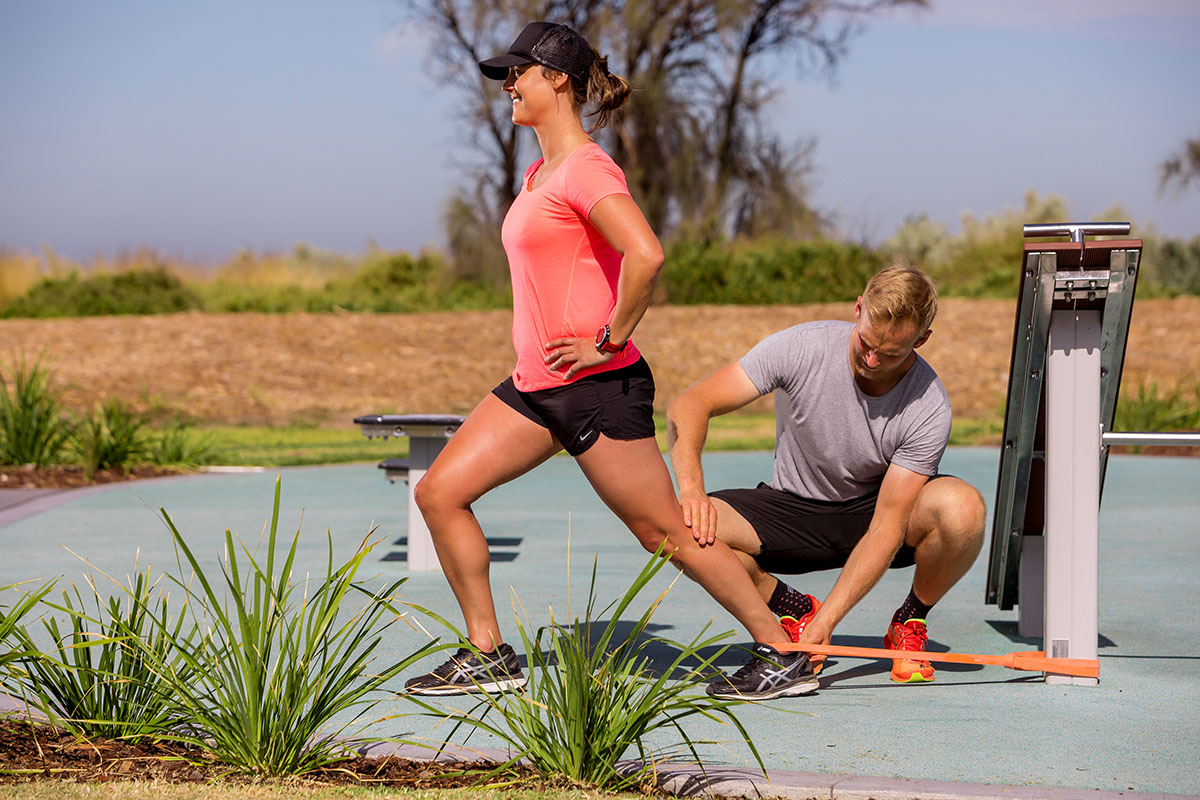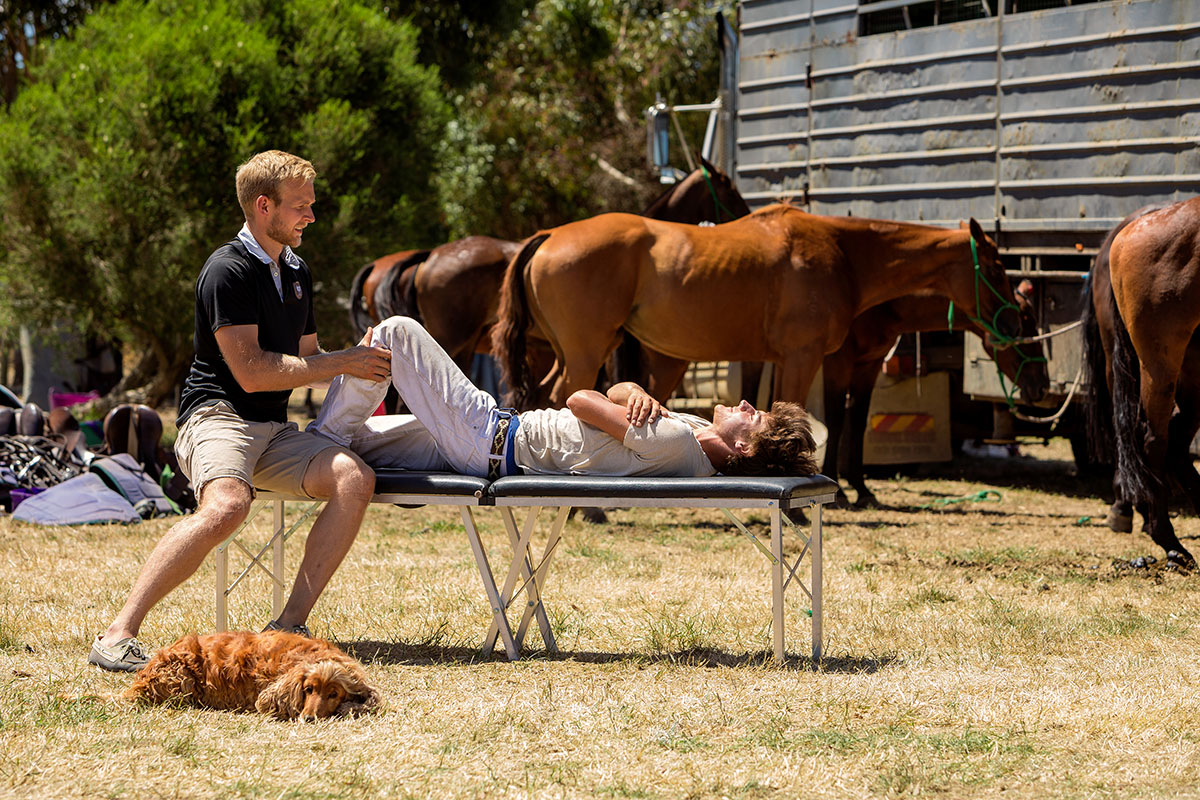Elite athletes don’t get to the top of their game simply doing what they do best all of the time. They hone their fitness, their strength and their health through a whole range of extracurricular means.

Australian rules footballers play practice matches and drill certain “plays”. For the equestrian athlete, this could be comparable to practicing a test, a movement within a test, or a combination of fences. Footballers practice certain skills like handballing, kicking, tackling and numerous variations of these. For the equestrian athlete, this could be comparable to losing the stirrups, riding with a broomstick behind the elbows or sitting to the trot on the lunge.
Then, off the field, the footballer will have strength work, conditioning work, sprint track and swimming pool sessions. They will have treatment in the form of chiropractic, massage, osteopathy and physiotherapy. There will be sports psychologists, nutritionists, medical practitioners.
Granted, most of us are recreational equestrian athletes. We have day jobs, families and businesses to manage. That being said, what might be the low hanging fruit you can take advantage of to improve your performance when riding? Do you have a strong enough back and core to keep your body upright in the saddle with ease? Is your mobility sufficient to allow this posture or are your flexor muscles hunching you forwards? Are you sleeping enough and eating well enough to allow you to have the energy and stamina needed for the entirety of your ride? Are you fit enough? Lean enough? Sharp enough reflexes?
If you decide there is one area you would like to improve, what next? We work on it. Two questions pop into my mind now. Firstly, how do I improve that component? And secondly, how will I know if I’ve succeeded? If I’m not strong enough, I add in more movement and some resistance training. This doesn’t need to be complicated or time consuming. It may be as simple as following some online programming or high intensity interval training (HIIT) app. Or it may involve employing a PT or similar.
Not sleeping enough? Is it a quantity or quality of sleep issue? Not surprisingly, sleep is important. It is when our batteries are recharged and our body’s housekeeping performed. Skimp here and the other proactive measures taken won’t be as effective.
Not eating well enough? You know what to do, cut the crap. Eat close to nature. Lean enough? Potentially complicated territory. I handball these ones to my wife, ‘The Natural Nutritionist’. Sharp enough reflexes? Tried juggling? Great coordination sharpener! Your HIIT training and sleep improvement will also help this.
Now you’ve some ideas about what to do, how do you ensure that you’re having some objective success? “What gets measured, gets managed”. How you feel you are doing is important, however, when we’re in the early stages of change, it may be a 1-5% improvement. This may leave you questioning if you’re on the right path.
For this reason, objective measures are important. If you’re working on your strength, taking note of the reps and weights used initially, then after a two-week period, it may show changes. Mobility? Take a photo of you in a certain pose or movement and compare before and after. Posture photos on and off your horse may also be of use. Think a front-on and side-on photo, both on and off the horse.

“Tried juggling? Great
coordination sharpener!”
If it is endurance you’re working on, take some footage of your riding posture or technique at the start of a schooling session versus the end. Or the ease in which you complete a certain workout or task you perform repetitively. Coordination or reflexes? How many balls you can juggle for how many seconds/minutes? Sleep quality or quantity? So many apps to help with this.
When in doubt, work with or initially consult a professional. They have the knowledge and experience to deploy that knowledge. They know the common pitfalls, misconceptions and how to personalise for an individual human with individual needs.
When contemplating starting to make changes, it can be daunting. Two things to remember: firstly, the human body has remarkable capacity for change and repair. Old injuries, postures and limps can be influenced. Sometimes fixed, sometimes not — however, improvements can almost always be made to the injury or the supporting areas. Secondly, I suggest committing to something small. A one-week trial or a one-month trial. The changes will be small, but I’ve found that approach eases the friction of getting started. Good luck! EQ

